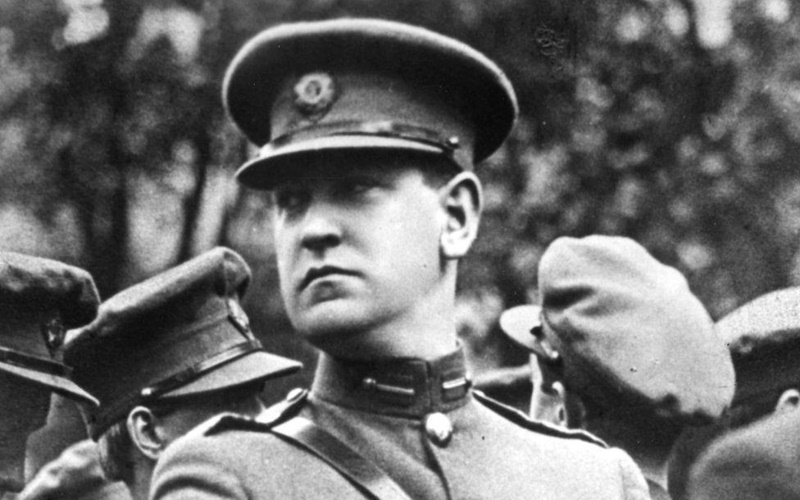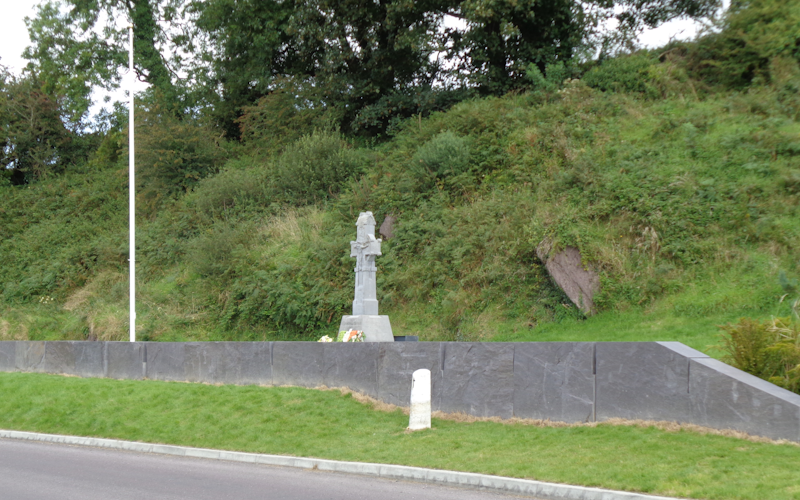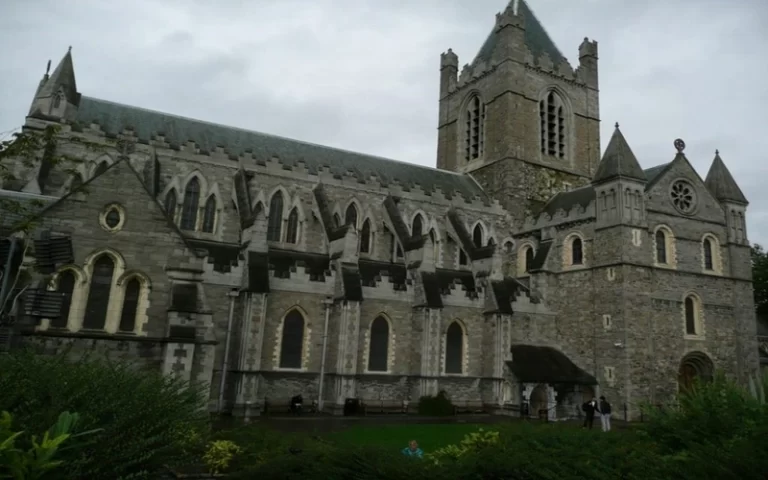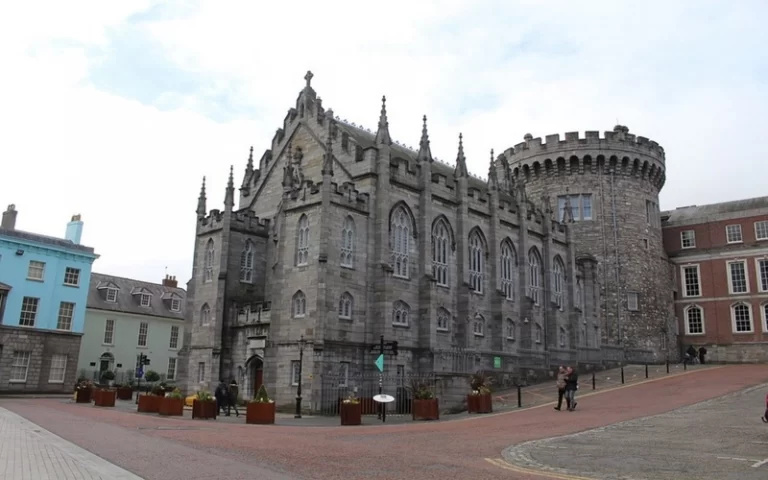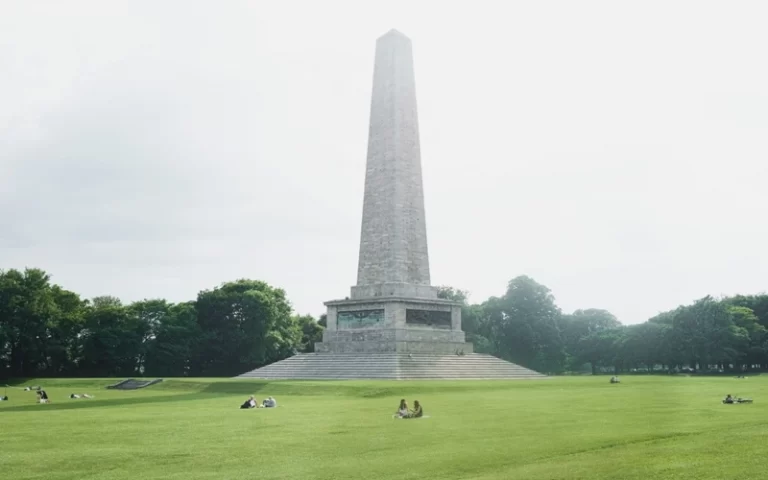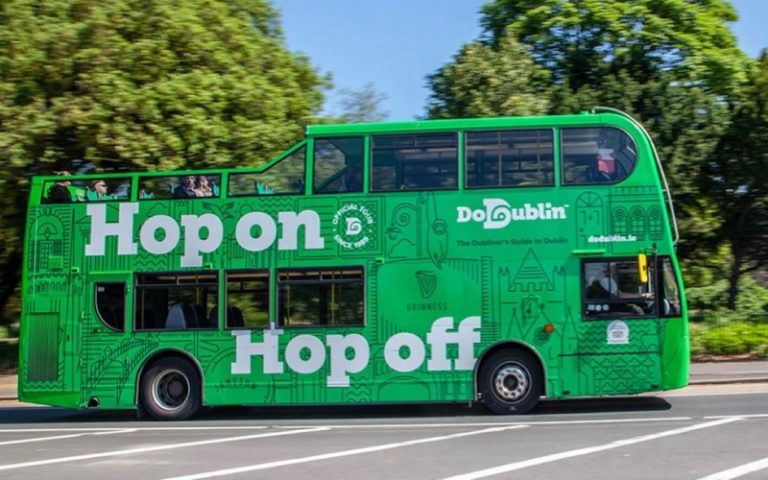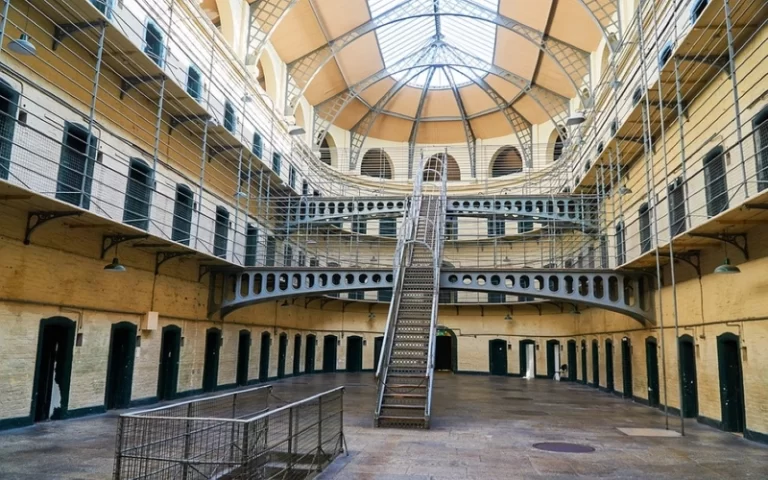Béal na mBláth Cork
On 22 August 1922, during the Irish Civil War, Michael Collins, Chairman of the Provisional Government and Commander-in-chief of the National Army, was killed in an ambush near Béal na mBláth by anti-treaty IRA forces while travelling in convoy from Bandon. Annual Commemorations are held on the nearest Sunday to the anniversary of his death. A memorial cross stands at the site of the shooting (coordinates 51.81356°N 8.85651°W). A small white pillar marked with a cross, located just to the right of the steps, marks the exact spot where he fell.
His Early Years
Michael Collins was born on a family farm near Clonakilty, West Cork. After leaving school aged 15, Collins took the British Civil Service examination in Cork in February 1906. In 1910, he moved to London where he became a messenger at the London firm of stock brokers, Horne and Company. While in London he studied at King’s College. He joined the London GAA and, through this, the Irish Republican Brotherhood (IRB), a secret, oath-bound society dedicated to achieving Irish Independence. In 1915, he moved to New York but returned to Ireland the following year.
Easter Rising
Michael Collins first became known during the Easter Rising in 1916. A skilled organiser and very intelligent, he was highly respected in the IRB. When the Rising itself took place on Easter Monday, 1916, he fought alongside Patrick Pearse and others in the General Post Office in Dublin.
Collins, like many of the other participants, was arrested and almost executed. He was imprisoned at Frongoch Internment Camp in Wales. Collins became one of the leading figures in Sinn Fein after the Rising. By October 1917, he had become a member of the executive of Sinn Féin and Director of Organisation of the Irish Volunteers. Eamonn de Valera was president of both organisations. Collins was elected as MP for Cork South in 1918.
Sinn Féin MPs had announced that they would not take their seats in Westminister, but instead would set up an Irish Parliament in Dublin. The first Dail met in the Mansion House, Dublin, in January 1919. On the same day, an ambush party of the IRA attacked the Royal Irish Constabulary at Soloheadbeg killing two policemen. This ambush is considered the first action in the Irish War of Independence.
War of Independence
In 1919, Collins had a number of roles. He was elected president of the IRB, Director of Intelligence of the Irish Republican Army, and Minister for Finance. He was the main organiser of the Irish Republican Army, which consisted of a large number of disorganised guerrilla units. Both sides in the war carried out brutal atrocities.
In 1920, the British offered £10,000 for information leading to the capture or death of Collins. By this time, his fame transcended the IRA movement and he was widely known as “The Big Fellow.”
In May 1921, Ireland was partitioned under British law, creating Northern Ireland (consisting of six counties in the northeast of the island), and unionists formed a Northern government.
In July 1921, the British suddenly offered a truce. Arrangements were made for talks between the British Government and the leaders of the as-yet unrecognised Irish State. The negotiations resulted in the Anglo-Irish Treaty which was signed on 6 December 1921.
Anglo-Irish Treaty
Although it was not the republic he was fighting for, Collins concluded that the Treaty offered Ireland “the freedom to achieve freedom.” The nationalist movement split over the terms of the treaty. This led to the Civil War.
Civil War
On April 14, 1922, a group of 200 anti-Treaty IRA men occupied the Four Courts in Dublin in defiance of the Provisional government. Under Collins’ supervision, the Free State rapidly took control of the capital. In July 1922, anti-Treaty forces held the southern province of Munster and several other areas of the country. De Valera supported the anti-Treaty IRA.
The Free State re-took Munster and the west in July–August of 1922. As part of this offensive, Collins travelled to his native Cork. This was against the advice of his companions. Collins is said to have told his comrades that “They wouldn’t shoot me in my own county”.
The Anti-Treaty IRA attacked Collins and his comrades at Béal na mBláth as they returned to Cork. Collins was killed in the gun battle, which lasted about twenty minutes. He was the only fatality. His body was taken to Dublin and buried in Glasnevin Cemetery.
See more about Michael Collins in the Michael Collins House Museum in Clonakilty, Co Cork.
